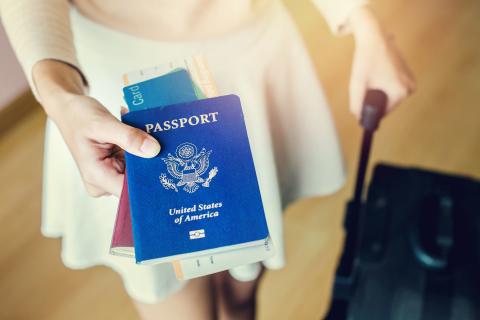Chikungunya Virus: About
Chikungunya is an illness spread by the bite of infected Aedes aegypti and Aedes albopictus mosquitoes.
Cases of chikungunya in Wisconsin residents occur in people who have traveled to countries in Africa, Asia, Europe, the Indian and Pacific Oceans, the Caribbean, and the Americas. Chikungunya virus is very rarely spread in the U.S., however, there are a few small areas where the species of mosquitoes that spread the virus are common.
Chikungunya is preventable.
Anyone who travels to areas where chikungunya virus is spread can get the illness, but people who spend more time outdoors are at a higher risk of being bitten by an infected mosquito. It is important to take preventive steps when traveling to areas with chikungunya virus, such as wearing protective clothing, using insect repellents, and using mosquito netting.
For more tips, visit our Mosquito Bite Prevention page and the CDC (Centers for Disease Control and Prevention) Travelers' Health page.
Chikungunya virus is spread to humans through the bite of an infected mosquito.
- Mosquitoes get infected with chikungunya by feeding on humans that have been infected with the virus.
- After feeding on an infected human, the virus may end up inside of the mosquito.
- Once it has the virus, a mosquito may spread the virus to uninfected humans when it takes another blood meal.
- The mosquitoes that spread chikungunya are most active during the daytime. Peak biting hours are early in the morning and in the evening before dusk.
- It is possible for a mother to spread chikungunya to her child around the time of birth, though this is rare. Chikungunya virus is not spread through breastfeeding.
Chikungunya is preventable. Visit our Mosquito Bite Prevention page to learn how to prevent mosquito bites.
Symptoms can show up one to 12 days after being bitten by an infected mosquito.
Most people who are infected with chikungunya will develop symptoms. The most common symptoms are high fever (typically 102°F or higher) and joint pain, which can be severe. Symptoms usually go away in seven to 10 days. Some people may have recurring joint pain months after illness onset, but this is rare. Severe illness can occur in babies who got the illness during birth from a mother infected with chikungunya, older adults (65 and older), and people with chronic medical conditions. Death is rare and mostly occurs in older adults.
Common signs and symptoms
- Fever
- Headache
- Myalgia (muscle aches)
- Arthritis (joint swelling )
- Conjunctivitis (red eyes)
- Nausea and/or vomiting
- Rash
There is currently no specific treatment for chikungunya virus. Clinical management is supportive care, including rest, fluids, and over-the-counter pain relievers to relieve acute pain and fever. If a patient has traveled to a dengue-endemic area, acetaminophen is the preferred first-line treatment for fever and joint pain until dengue can be ruled out. If you believe you or a family member may have chikungunya virus, contact your doctor.
Patients with suspected chikungunya virus disease should be managed as dengue until dengue virus infection has been ruled out.
There is now a vaccine available for adults aged 12 years and older to prevent chikungunya virus infection in the U.S. called VIMKUNYA. Regardless of vaccination status, travelers should still use protective measures to prevent mosquito bites during and after their trip.
Mosquito Bites Are Bad (PDF): An educational activity book from the CDC for kids about preventing illnesses spread by mosquitoes.
Questions about illnesses spread by mosquitoes? Contact us!
Phone: 608-267-9003 | Fax: 608-261-4976



